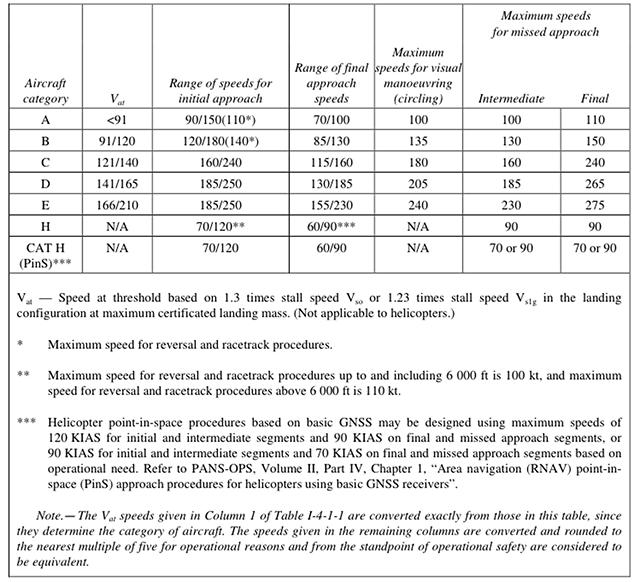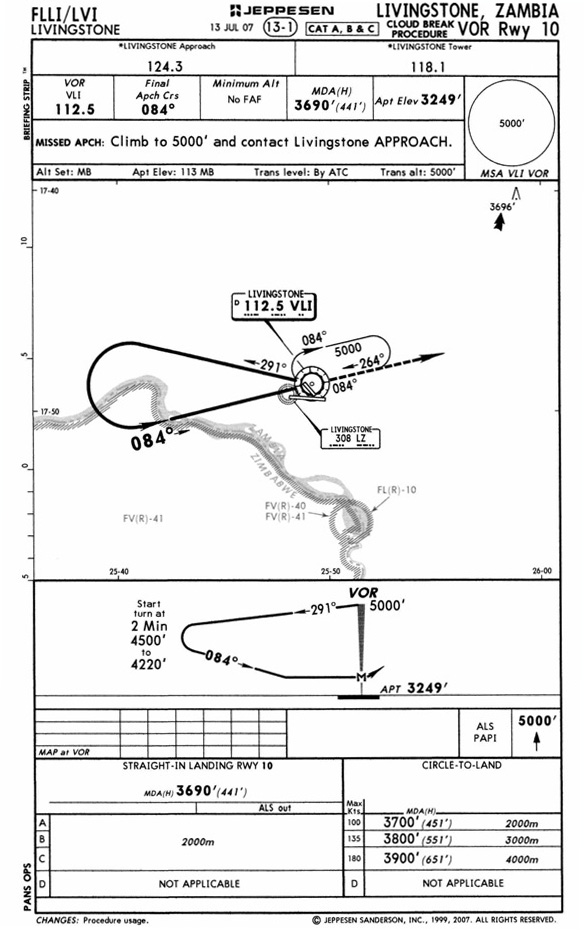Each ICAO state is allowed to deviate from ICAO standard practices but must publish these differences in their Aeronautical Information Publication. Of course you rarely have access to a country's AIP and even if you did, they are rarely in a language you (I) can understand. Fortunately, the Jeppesen State pages do a pretty good job of highlighting the differences.
— James Albright

Updated:
2017-04-22
If you know the key areas where the rules in the US are different from the ICAO standard, you will have a starting position from which to examine the differences for each country on your international itinerary. The following list is by no means inclusive, but touches on commonly confused items. A more complete list is available in the United States Aeronautical Information Publication, § GEN 1.7.
The good news here is the U.S. and most other countries are becoming more standardized with the ICAO and there are fewer differences. The ICAO has also started publishing major differences in ICAO Doc 7030, though this document is rarely up-to-date.

Aircraft Speed
There are no equivalent standard maximum speeds when below 10,000 feet, within an airport traffic area, etc. under ICAO. Most countries have adopted similar standards and these will be noted in individual country AIPs and in the Jeppesen state pages.
Approach Ban
The ICAO standard prohibits aircraft from taking off, continuing en route, starting an approach, or continuing an approach if the destination weather is below minimums, similar to U.S. rules for 14 CFR 135 operations. There are exceptions in many countries. The rules and exceptions do apply to U.S. operations. More information: Approach Ban.
Approach Category, Maximum Speeds
While the speed ranges used to determine an aircraft’s approach category are identical to 14 CFR 97.3 (ICAO Doc 8168 PANS-OPS Vol 1, §4, ¶1.3.5), the maximum permitted speed for visual maneuvering is significantly higher. The method used for determining the approach category speed is slightly different: VAT = speed at threshold based on 1.3 times VSO or 1.23 times VSLG at maximum certificated weight. Additionally, speed ranges are specified for other segments of the approach: ICAO Doc 8168 PANS-OPS Vol 1, §4, Table I-4-1-2.
CAVOK
Used when the visibility is 10 km or more, there are no clouds of operational significance, and no weather of significance to aviation. [ICAO Annex 3, Appendix 3, ¶2.2]
Circling Area Radius
The speeds used to determine circling radius differ (see “Approach Category” above) and other factors, such as wind and pressure altitude, are considered. As an example, turn radii for circling at 1,000 ft MSL are as shown. [ICAO Doc 8168 PANS-OPS Vol 1, §4, Table I-4-7-2]
It has been no secret that old U.S. TERPS circling approach criteria are destined to kill people. (See Air China 129 for an example.) TERPS has changed but very few U.S. circling approaches have. You should understand U.S. old and current criteria and compare those to ICAO. More about that: Circling Approach Area.
Circling Missed Approach Procedures
The FAA and ICAO suggest the initial turn on a missed approach during a circling approach be executed to the landing runway but the ICAO does not require it. Some exceptions exist, such as at several airports in Denmark. The state pages should be examined to be sure.
Clearance, Pre-Taxi
There is no ICAO equivalent to US Pre-Taxi Clearance procedures. Clearances are normally issued while the aircraft is taxiing for takeoff without pilot request. [ICAO Doc 4444, ¶4.5.5] The individual state pages may give specific departure radio procedures to include ATC clearance timing; listening to the indicated frequencies in advance to hear local procedure can be helpful. While a few international locations are starting the pre-taxi clearance custom, a vast majority will not issue a clearance until the aircraft is closer to takeoff position. To request a clearance, the appropriate call is “Request ATC clearance.”
Cloud Break Procedure
These procedures no longer exist in the US and are rapidly disappearing internationally, though examples can be found in many African countries.
There is no longer any official guidance in any ICAO document; the following comes from pilot technique guides. The intent of a cloud break procedure is to get the aircraft under a ceiling at a point abeam the runway so the approach can be “broken” and the approach to landing be continued visually, sometimes using a prescribed track.
Conditional Clearances
Conditional clearances are allowed and used by some countries, provided the aircraft or vehicles concerned are seen by the appropriate controller and pilot. For example, “SAS 941, behind DC-9 on short final, line up behind” would direct SAS 941 to enter the runway on to position and hold once the DC-9 on short final has passed. [ICAO Doc 4444, ¶12.2.7]
Course Reversals, Holding Patterns (versus Procedure Turns)
ICAO course reversals and holding patterns differ significantly from those used in the US and are covered in Course Reversals.
ICAO rules grant considerably less flexibility to pilots entering holding patterns or executing course reversals. Following standard FAA holding pattern procedures while entering an ICAO course reversal can result in an airspace violation. [ICAO Doc 8168 PANS-OPS Vol I, Part I, §4, ¶3.3.]
Lost Communications, IFR
Failing to understand ICAO Lost Communications rules can be fatal. 154 lives were lost when U.S. corporate pilots mistakenly used U.S. FAA rules in ICAO rules airspace, see the case of DHL 611 and Bashkirskie Avialinii 2937.
ICAO Annex 2, ¶3.6.5.2 procedures are the norm for the world; U.S. FAA lost communications procedures are an exception only valid in the U.S.
Signals
Under ICAO an additional signal is used. The flashing white signal to aircraft in flight means “land at this aerodrome and proceed to apron.” [ICAO Annex 2, ¶4.1]
Starting Procedures
The “Request Start up” or “Request Engine Start” radio call is required at many airports. [ICAO Annex 2, ¶12.3.4.3] The call is far from universal, however. Pilots should scan the Jeppesen state pages where such a requirement is often listed. Another good technique is to listen to the ground frequency to see if the local traffic follows this procedure.
Transition Altitude, Layer, Level
ICAO terminology differs slightly:
Transition altitude. The altitude at or below which the vertical position of an aircraft is controlled by reference to altitudes.
Transition layer. The airspace between the transition altitude and the transition level.
Transition level. The lowest flight level available for use above the transition altitude.
Source: ICAO Doc 4444, Chapter 1
As you are climbing, switch to 1013 passing the transition altitude, since that is the last valid altitude. As you are descending, switch to QNH passing the transition level, since that is the last valid flight level.
See Transition Altitude/Layer/Level for more about this.
Units of Measure
The US deviates from the International System of Measurement in several areas. [ICAO Annex 5, Table 3-4]
Airspeed ... km/h or Mach knots, or nm/hr, has become increasingly accepted for most countries though it is not yet the ICAO standard
Distances, runway length, RVR ... meters
Visibility ... kilometer
Weight ... kilogram
References
(Source material)
Aeronautical Information Publication, United States
ICAO Annex 2 - Rules of the Air, International Standards, Annex 2 to the Convention on International Civil Aviation, July 2005
ICAO Annex 3 - Meteorological Service for International Air Navigation, International Standards and Recommended Practices, Annex 3 to the Convention on International Civil Aviation, July 2010
ICAO Annex 5 - Units of Measurement to be used in Air and Ground Operations, International Standards and Recommended Practices, Annex 5 to the Convention on International Civil Aviation, July 1979
ICAO Doc 4444 - Air Traffic Management, 16th Edition, Procedures for Air Navigation Services, International Civil Aviation Organization, October 2016
ICAO Doc 8168 - Aircraft Operations - Vol I - Flight Procedures, Procedures for Air Navigation Services, International Civil Aviation Organization, 2006


